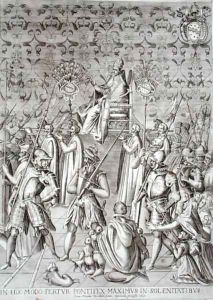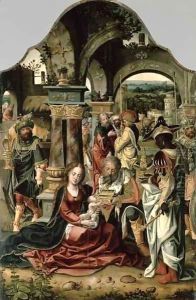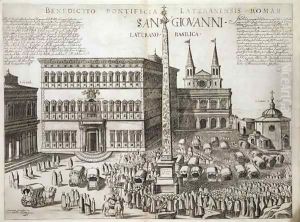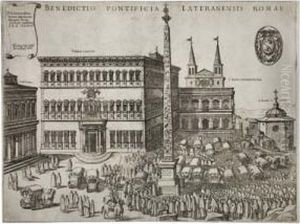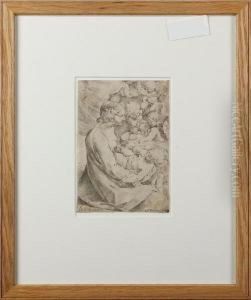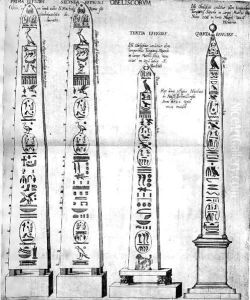Nicolaus van Aelst Paintings
Nicolaus van Aelst, also known as Niccolò Vanelst or Nicolaus van Aelst of Mechelen, was a Flemish engraver and printer. Born in 1526 in Mechelen, which is present-day Belgium, he was part of the vibrant artistic culture of the Low Countries during the Renaissance period. Not to be confused with Pieter Coecke van Aelst, a contemporary Flemish painter, Nicolaus was primarily known for his work in the printmaking domain.
Early in his career, Nicolaus moved to Italy, which was a common practice among Northern European artists seeking to refine their skills and absorb the Italian Renaissance's influence. He settled in Rome, where he became a pupil of the famous Italian engraver and printmaker Cornelis Cort. Under Cort's tutelage, Nicolaus honed his craft and began to produce engravings that were characterized by their meticulous detail and the influence of Italian art.
Van Aelst established his reputation as a master engraver and was granted the title of 'engraver to the pope' under Pope Gregory XIII. This prestigious position allowed him to work on significant commissions and contribute to the decoration of important buildings in Rome. His engravings often reproduced the works of well-known artists of the time, such as Raphael, and served to disseminate the Italian Renaissance style throughout Europe.
As a printer, Nicolaus van Aelst was also involved in the publication of influential art books and reproductions, which further expanded his impact on the art world of his time. His works reveal a blend of Flemish attention to detail and the grandeur of the Italian Renaissance. He continued to work and live in Rome until his death in 1613.
Nicolaus van Aelst's contributions to the art of engraving are significant, as he was part of the wave of artists who facilitated the cross-pollination of artistic ideas between Italy and Northern Europe. His engravings are valued not only for their artistic quality but also for their historical importance in the spread of Renaissance aesthetics.
